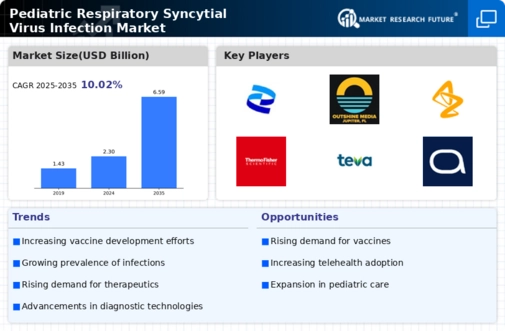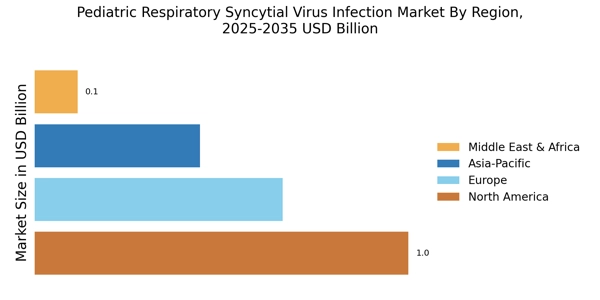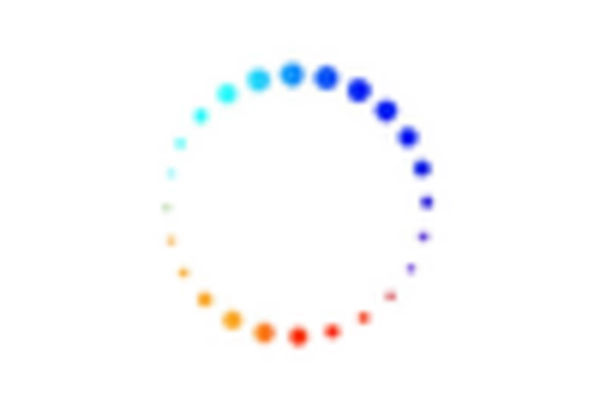Regulatory Support for RSV Treatments
Regulatory bodies are playing a pivotal role in shaping the Pediatric Respiratory Syncytial Virus Infection Market by providing support for the development and approval of new treatments. Recent regulatory frameworks have been established to expedite the review process for RSV therapies, which may encourage pharmaceutical companies to invest in this area. The potential for faster market entry of innovative products is likely to stimulate competition and drive growth within the industry. As regulatory agencies prioritize the approval of effective RSV treatments, the market could see an influx of new therapies that address unmet medical needs. This supportive regulatory environment is expected to enhance the Pediatric Respiratory Syncytial Virus Infection Market, ultimately benefiting patients and healthcare providers alike.
Technological Advancements in Diagnostic Tools
The Pediatric Respiratory Syncytial Virus Infection Market is benefiting from technological advancements in diagnostic tools. Innovations such as rapid molecular testing and point-of-care diagnostics are revolutionizing the way RSV infections are identified. These advancements enable healthcare professionals to diagnose RSV more quickly and accurately, which is crucial for timely intervention. The introduction of these technologies is likely to enhance patient outcomes and reduce the burden on healthcare systems. As the demand for efficient diagnostic solutions grows, manufacturers are expected to invest in the development of advanced testing methods. This trend may lead to a more competitive landscape within the Pediatric Respiratory Syncytial Virus Infection Market, as companies strive to offer cutting-edge products that meet the evolving needs of healthcare providers.
Increased Investment in Research and Development
Investment in research and development is a key driver for the Pediatric Respiratory Syncytial Virus Infection Market. Pharmaceutical companies and research institutions are increasingly focusing on developing novel therapies and vaccines to combat RSV. The potential for lucrative returns on investment in this area is attracting significant funding, which may accelerate the pace of innovation. Recent studies have indicated that effective vaccines could reduce the incidence of RSV infections, thereby transforming the market landscape. As more entities recognize the importance of addressing RSV, the influx of capital into R&D initiatives is expected to foster advancements in treatment options. This trend could ultimately lead to a more robust Pediatric Respiratory Syncytial Virus Infection Market, characterized by a diverse range of therapeutic solutions.
Growing Awareness Among Parents and Healthcare Providers
Awareness regarding the implications of Pediatric Respiratory Syncytial Virus Infection Market is on the rise among parents and healthcare providers. Educational campaigns and initiatives by health organizations have contributed to a better understanding of RSV and its potential complications. This increased awareness is likely to lead to earlier diagnosis and treatment, which could positively influence the Pediatric Respiratory Syncytial Virus Infection Market. As parents become more informed about the symptoms and risks associated with RSV, they are more inclined to seek medical attention for their children. Consequently, this trend may result in a higher demand for diagnostic tools and therapeutic options, thereby propelling the market forward. The proactive approach taken by healthcare providers in educating families about RSV is expected to further enhance the market landscape.
Rising Incidence of Respiratory Syncytial Virus Infections
The Pediatric Respiratory Syncytial Virus Infection Market is experiencing growth due to the rising incidence of RSV infections among infants and young children. According to health authorities, RSV is a leading cause of lower respiratory tract infections in children under five years of age. The increasing number of hospitalizations related to RSV has prompted healthcare systems to prioritize preventive measures and treatment options. In recent years, the incidence rate has shown a concerning upward trend, which may lead to heightened awareness and demand for effective therapies. This situation is likely to drive investments in research and development, thereby expanding the Pediatric Respiratory Syncytial Virus Infection Market. As healthcare providers seek to mitigate the impact of RSV, the market could witness a surge in innovative solutions aimed at reducing infection rates.


















Leave a Comment